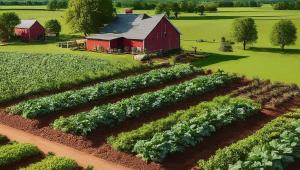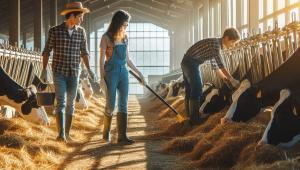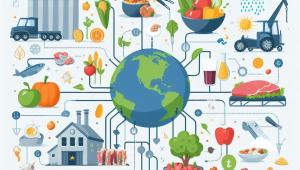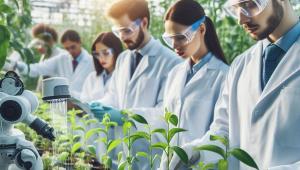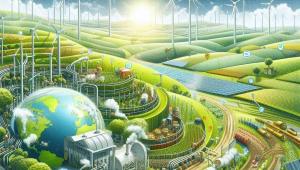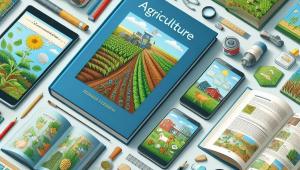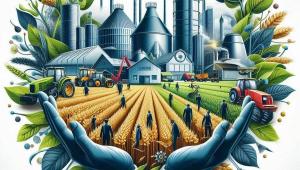Tourism and agriculture are vital sectors significantly contributing to the global economy. While they may seem unrelated initially, these industries are increasingly intertwined, especially in rural areas and developing countries.
Economic Impact of Tourism
Global Tourism Statistics
Tourism is one of the world's largest economic sectors. According to the World Travel & Tourism Council (WTTC), in 2019, before the COVID-19 pandemic, travel and tourism contributed 10.4% to global GDP and was responsible for 334 million jobs, or 10.6% of total employment. While the pandemic caused a significant downturn, the industry is recovering, with projections indicating a return to pre-pandemic levels by 2024.
Direct and Indirect Economic Benefits
Tourism generates economic benefits through various channels:
- Direct spending: Tourists spend money on accommodations, food, transportation, and attractions.
- Job creation: The industry employs people in hotels, restaurants, tour agencies, and related services.
- Infrastructure development: Tourism often drives improvements in roads, airports, and public facilities.
- Tax revenue: Governments collect taxes from tourism-related businesses and activities.
Multiplier Effect
The tourism industry has a significant multiplier effect on the economy. For every dollar spent by tourists, additional economic activity is generated through supply chains and employee spending. This ripple effect can stimulate growth in various sectors, including agriculture.
Agriculture: The Backbone of Rural Economies
Global Agricultural Statistics
Agriculture remains a crucial sector for many economies, especially in developing countries. The Food and Agriculture Organization (FAO) reports that agriculture accounts for about 4% of global GDP. However, in some low-income countries, it can contribute up to 25% of GDP and employ over 60% of the labor force.
Challenges Facing Agriculture
- Climate change: Extreme weather events and changing patterns affect crop yields.
- Water scarcity: Agriculture accounts for 70% of global freshwater withdrawals.
- Land degradation: Unsustainable practices lead to soil erosion and loss of fertility.
- Market volatility: Fluctuating commodity prices impact farmer incomes.
- Rural-urban migration: Young people are leaving rural areas for urban opportunities.
The Need for Diversification
Given these challenges, many rural communities are looking to diversify their economies. Tourism offers an opportunity to supplement agricultural income and create new economic opportunities.
Intersection of Tourism and Agriculture
Agritourism: A Growing Trend
Agritourism is a form of niche tourism that combines agricultural activities with tourism experiences. It can include:
- Farm stays
- Harvest festivals
- Wine tours and tastings
- Pick-your-own fruit experiences
- Agricultural museums and education centers
This sector has been growing rapidly, with the global agritourism market expected to reach $62.98 billion by 2027, according to Allied Market Research.
Benefits of Agritourism
- Supplemental income for farmers
- Preservation of rural landscapes and traditions
- Educational opportunities for urban visitors
- Promotion of local food systems
- Reduced rural-urban migration
Case Study: Tuscany, Italy
Tuscany is a prime example of successful agritourism. The region's rolling hills, vineyards, and olive groves attract millions of visitors annually. Many farms have converted old buildings into guesthouses, offering authentic experiences that combine agriculture, gastronomy, and cultural heritage.
Economic Synergies Between Tourism and Agriculture
Local Food Systems and Culinary Tourism
Tourists increasingly seek authentic, local food experiences. This trend creates opportunities for farmers to sell their products directly to restaurants, hotels, and tourists.
Farm-to-Table Movement
The farm-to-table movement emphasizes using locally sourced ingredients. This not only provides fresher food for tourists but also supports local farmers and reduces transportation costs and carbon emissions.
Culinary Tours and Cooking Classes
Many destinations now offer culinary tours and cooking classes featuring local ingredients and traditional recipes. These activities create additional revenue streams for both farmers and tour operators.
Supply Chain Integration
Tourism can stimulate demand for local agricultural products, leading to more integrated supply chains:
- Hotels and restaurants sourcing locally
- Creation of farmers' markets catering to tourists
- Development of food processing industries to meet tourism demand
Employment Opportunities
The integration of tourism and agriculture creates diverse employment opportunities:
- Tour guides specializing in agricultural heritage
- Hospitality staff with knowledge of local farming practices
- Artisanal food producers catering to tourist markets
Sustainable Development Through Agri-Tourism
Environmental Sustainability
When properly managed, agri-tourism can promote environmental sustainability:
- Preservation of biodiversity through traditional farming practices
- Incentives for farmers to adopt eco-friendly methods
- Education of visitors about sustainable agriculture
Cultural Preservation
Agri-tourism helps preserve rural cultural heritage:
- Maintenance of traditional agricultural practices
- Revival of local crafts and food traditions
- Intergenerational knowledge transfer
Economic Resilience
Diversification through agri-tourism can make rural economies more resilient:
- Reduced dependence on single crops or markets
- Year-round income opportunities
- The attraction of young people to rural areas
Challenges and Considerations
Balancing Tourism and Agriculture
- Land use conflicts: Ensuring that tourism development doesn't compromise agricultural productivity
- Water management: Balancing the needs of tourists with agricultural requirements
- Seasonal labor allocation: Managing labor needs during peak tourism and harvest seasons
Quality Control and Standards
- Developing and enforcing standards for agri-tourism facilities
- Ensuring food safety in farm-to-table operations
- Maintaining authenticity while meeting tourist expectations
Infrastructure Development
- Improving rural roads and transportation networks
- Providing adequate water and sanitation facilities
- Developing telecommunications infrastructure for rural areas
Marketing and Promotion
- Creating cohesive branding for agri-tourism destinations
- Leveraging digital marketing to reach potential visitors
- Collaborating with tour operators and travel agencies
Policy Implications and Government Role
Supportive Legal Framework
Governments can facilitate agri-tourism development through:
- Clear regulations for farm stays and on-farm activities
- Simplified licensing procedures for small-scale agri-tourism operations
- Tax incentives for farmers diversifying into tourism
Financial Support
- Grants or low-interest loans for agri-tourism development
- Support for marketing initiatives
- Funding for relevant infrastructure improvements
Capacity Building
- Training programs for farmers on hospitality and tourism management
- Extension services to help farmers develop agri-tourism products
- Support for agri-tourism cooperatives and associations
Land Use Planning
- Zoning regulations that allow for agri-tourism activities
- Protection of prime agricultural land from excessive development
- Integrated rural development plans that balance agriculture and tourism
Technology and Innovation in Agri-Tourism
Digital Platforms
- Online booking systems for farm stays and experiences
- Virtual farm tours and pre-visit education
- Social media marketing and user-generated content
Precision Agriculture and Tourism
- Using drones for both crop monitoring and creating aerial tours
- GPS-guided farm tours
- Augmented reality apps for self-guided agricultural experiences
Sustainable Technologies
- Solar-powered facilities for eco-friendly farm stays
- Water recycling systems for agriculture and tourism use
- Electric vehicle charging stations at rural tourism sites
Global Best Practices in Agri-Tourism
New Zealand: Wine Tourism
New Zealand's wine regions, such as Marlborough and Hawke's Bay, have successfully integrated wine production with tourism. Visitors can tour vineyards, participate in tastings, and stay at wineries, creating a high-value tourism product that supports the wine industry.
Japan: Rice Terraces of Oyama Senmaida
The Oyama Senmaida rice terraces in Kamogawa City have become a tourist attraction while maintaining their agricultural function. Visitors can participate in planting and harvesting activities, supporting the preservation of this traditional farming landscape.
Costa Rica: Coffee Tours
Costa Rica has developed a thriving agri-tourism sector around its coffee industry. Tourists can visit coffee plantations, learn about sustainable growing practices, and participate in coffee tastings, adding value to the country's coffee exports.
France: Château Stays
Many French châteaux, particularly in wine-growing regions, have been converted into luxury accommodations. These properties often maintain working vineyards or farms, offering guests a unique blend of history, agriculture, and high-end tourism.
Future Trends and Opportunities
Climate-Smart Agri-Tourism
As climate change impacts agriculture, there's an opportunity to educate tourists about adaptive farming practices:
- Drought-resistant crop tours
- Climate-controlled greenhouse visits
- Sustainable water management demonstrations
Wellness Tourism and Agriculture
The growing wellness tourism sector can be integrated with agriculture:
- Farm-based yoga and meditation retreats
- Herb gardens and aromatherapy experiences
- "Detox" vacations featuring organic, plant-based diets
Technological Integration
Emerging technologies will continue to shape agri-tourism:
- IoT sensors providing real-time farm data to visitors
- Blockchain for tracing food from farm to table
- AI-powered personalized agri-tourism experiences
Urban Agri-Tourism
As urban agriculture grows, new opportunities emerge:
- Rooftop farm tours in cities
- Vertical farming experiences
- Urban beekeeping workshops
Measuring the Impact of Agri-Tourism
Economic Indicators
- Direct revenue from agri-tourism activities
- Increase in local agricultural product sales
- Job creation in rural areas
- Growth in related industries (e.g., food processing, craft production)
Social Indicators
- Rural population retention rates
- Preservation of traditional skills and knowledge
- Community engagement and social cohesion
- Educational outcomes for visitors and locals
Environmental Indicators
- Biodiversity measures on agri-tourism farms
- Adoption rates of sustainable farming practices
- The carbon footprint of integrated agriculture and tourism operations
- Water use efficiency in agri-tourism settings
Conclusion
The integration of tourism and agriculture offers a promising path for sustainable economic development, particularly in rural areas. By leveraging the synergies between these sectors, communities can create diverse, resilient economies that preserve agricultural heritage while meeting the demands of modern tourists.
As the global tourism industry recovers and evolves post-pandemic, there is a unique opportunity to rebuild in a way that more closely aligns with sustainable development goals. Agri-tourism, with its emphasis on local food systems, cultural preservation, and environmental stewardship, is well-positioned to meet the changing preferences of travelers seeking authentic, meaningful experiences.
However, realizing the full potential of this integration requires careful planning, supportive policies, and ongoing innovation. Balancing the needs of agriculture and tourism, maintaining authenticity while meeting visitor expectations, and ensuring equitable distribution of benefits are ongoing challenges that must be addressed.
As we look to the future, the continued growth of agri-tourism will likely play a significant role in shaping rural economies, agricultural practices, and the tourism industry as a whole. By fostering connections between urban consumers and rural producers, agri-tourism can contribute to greater understanding and support for sustainable agriculture, ultimately benefiting both the economy and the environment.
